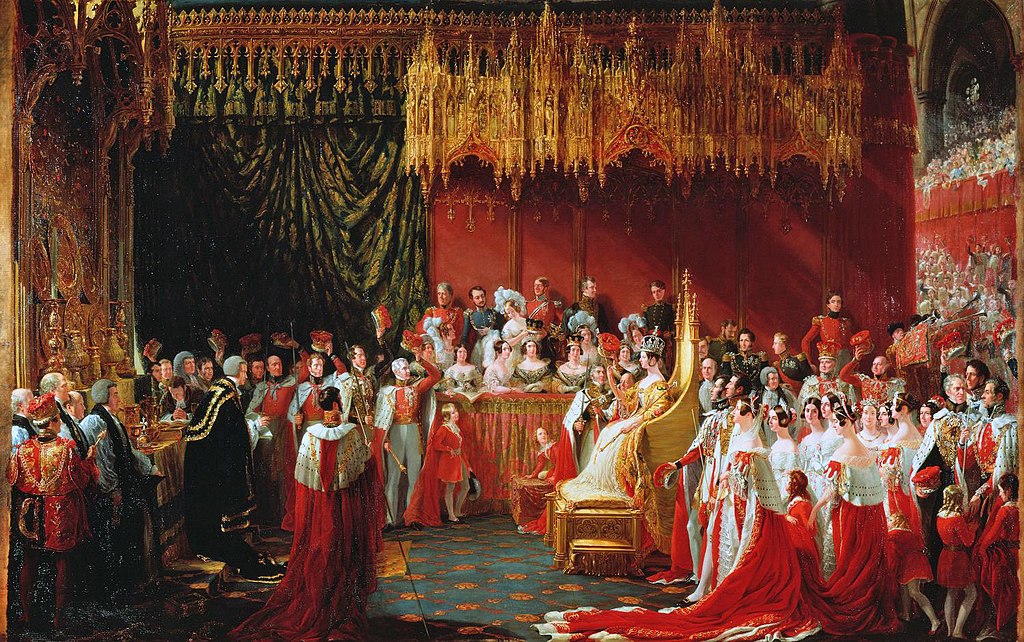
Queen Victoria reigned for 63 years and lent her name to the era of political and social change, but it began with a ‘botched’ coronation ceremony.
When Victoria was crowned on 22 June 1838, it was the third coronation ceremony of the century; and she followed two uncles to the throne: George IV, unpopular for his spending and his ego; and William IV, unpopular due to the Reform Crisis.
Her coronation had its fair share of errors. According to the Westminster Abbey website, everyone involved seemed woefully unprepared. Only The Queen and the Sub-Dean of Westminster, Lord John Thynne, knew what should be happening moment to moment.
An elderly peer fell on his way to pay homage to Victoria. Another bishop told her that the ceremony was over—when it was still ongoing, resulting in her having to return to the coronation theatre. Future British Prime Minister, Benjamin Disraeli, is recorded as having said about the spectacle that those involved “were always in doubt as to what came next, and you saw the want of rehearsal.”
But the most painful moment for Queen Victoria came when the coronation ring, a piece of jewellery based on the one worn by her uncle William IV, was jammed onto the wrong finger – and then needed removal.
In her diary, Queen Victoria recalled the moment: “The Archbishop had (most awkwardly) put the ring on the wrong finger, and the consequence was that I had the greatest difficulty to take it off again, which I at last did with great pain.”
According to the Royal Collection Trust website, Queen Victoria’s Coronation Ring was an octagonal step-cut sapphire ring set in gold and overlaid with five rubies that formed a cross. To top it off, the sapphire and rubies were framed by 20 cushion-shaped diamonds set in silver collets.
The Coronation Ring symbolises monarchical divinity and is always placed on the sovereign’s ring finger by the Archbishop of Canterbury. Queen Victoria’s ring deviated from a tradition dating back to the 13th century by using a sapphire as the principal stone instead of a ruby.
Queen Victoria’s Coronation Ring was made by the royal goldsmith, Rundell, Bridge & Rundell. And that’s where the trouble began: they fashioned it for her little finger, not her ring finger. And during the ceremony, the Archbishop of Canterbury forced the ring on her ring finger, causing Victoria a great deal of pain.
According to the Royal Collection Trust website, Queen Victoria was forced to ice her hand after the ceremony—which lasted five hours. She had it inscribed “Queen Victoria’s Coronation Ring 1838.”
Coronation Rings had been personal jewellery to each sovereign and consort up until Queen Victoria’s reign. After her death, her ring, and those of William IV and his consort, Queen Adelaide, were bequeathed to The Crown. Her grandson, King George V, had all three rings deposited to the Tower of London with the rest of the Crown Jewels during his reign.
Queen Victoria described her coronation in her diary as: “The enthusiasm, affection, and loyalty were really touching, and I shall remember this day as the Proudest of my life! I came home at a little after six, really not feeling tired. At eight we dined.”
But the ceremony gained a reputation for being ill-planned and prepared, and afterwards, historians studied the events and preceding coronations to ensure that the next ceremony would go off without a hitch. King Edward VII’s 1902 coronation would have its own issues, but none that plagued his mother’s.

